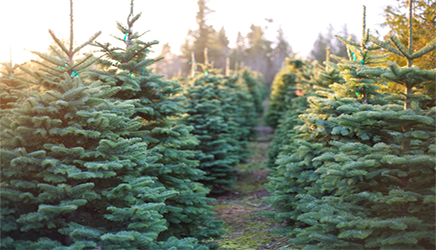Real vs Fake Trees: Which Is Best for the Environment?
Ah, Christmas. The most wonderful time of the year, as many recall. When you picture a perfect Christmas, it’s not uncommon to think of gathering around with your family and decorating your tree.
You may be gearing up to buy yourself an artificial tree, or perhaps you’re more a fan of buying a real tree from Christmas tree farms. But did you ever stop to think about the environmental impact?
If you’ve been sat at home with a mug of mulled wine, wondering whether a real or fake tree is more eco-friendly, wonder no more!
We take you through everything you need to know about real versus fake Christmas trees ensuring you can have a holly, jolly, eco-friendly Christmas!
We’ll be breaking down the key issues with each tree so you can make an informed decision this Christmas.
Let’s get to it!
The Christmas Tree Debate
In our eco-conscious modern times, people are more and more concerned about whether real trees are more environmentally-friendly than artificial ones. It’s true, both types have their benefits and drawbacks.
Whether you’re more concerned about the aesthetics and making sure your tree doesn’t clash with your brand new rug, or you’re anxious about the inevitable spill of pine needles, you’ll have been considering this Crimbo conundrum before eco-consciousness was cool.
However, now that environmental impacts are being considered, there’s a lot to think about! Many people consider artificial trees to be more environmentally-friendly than a genuine one, and you’d be forgiven for thinking so.
Unfortunately, it’s a lot more complicated than that!
The Facts
Did you know that, according to The Carbon Trust, you’d have to use an artificial tree for at least 10 years in order to have the same level of carbon footprint as a real Christmas tree?
If you didn’t – and we don’t blame you – have a read below of our pros and cons of each type of tree. We’ve compiled the most reputable information around to show you some truths you may not have considered!
Artificial Trees
Whilst artificial pines are certainly less messy than real trees, given that you don’t have stray pine needles clogging up your hoover, they’re not actually as eco-friendly as you’d initially expect.
According to the Carbon Trust, the average artificial Christmas tree is made of PVC plastic. This comes from oil – immediately meaning that these types have a higher level of emitted carbon.
What’s more, you’ll want to consider where your tree ends up after usage. Artificial types are non-recyclable and will end up in a landfill whether you’ve used them for the recommended ten years, or a single year.
Real Christmas Trees
Despite popular belief, a real tree actually is better for the environment.
Most of these pines are purposely planted for the occasion, on purpose-built farms. This means that they’re grown safely and are not ripped out of a forest, as you might imagine.
What’s more, authentic pines are 100% recyclable! They’re also not going to cause any harmful greenhouse gas emissions, meaning all in all the level of carbon dioxide emissions will be much lower.
The Verdict
As always, we know there are numerous factors to consider. Authentic pines look and smell incredible, whilst fake ones are an easy way to cut costs.
However, if you’re truly looking to slash your carbon emissions – go natural (pssst you could even get your Christmas tree delivered by us).






